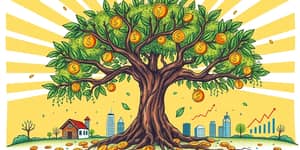Saving money often feels like an uphill climb, yet it remains one of the most empowering steps toward a secure future. By understanding the complex dance between mind, environment, and behavior, anyone can transform good intentions into lasting financial habits.
Defining Saving Behavior
Saving behavior describes the actions we take to set aside resources for future use. Whether it’s building an emergency fund or investing in a dream vacation, these actions are crucial for financial security and stability. Despite its obvious benefits, many people struggle to move from intention to action.
This gap—often called the intention-behavior gap—reveals that knowing what to do isn’t enough. Even those with the best goals can falter without practical strategies and psychological support.
Psychological Determinants of Saving
At the heart of saving lies self-control. The ability to delay gratification and curb impulsive spending determines whether we stick to our plans when temptation strikes. Studies show higher self-control correlates with greater adherence to saving routines.
Self-efficacy—our belief in our ability to succeed—also plays a pivotal role. When individuals feel confident they can save, they are more likely to take consistent action. Personality traits such as conscientiousness further enhance saving success, creating a “psychological fit” between goals and individual tendencies.
Social and Environmental Influences
We don’t make financial decisions in a vacuum. Family habits, peer norms, and cultural expectations shape our saving behaviors from childhood onward. Children raised in households that prioritize thrift and planning typically develop stronger saving habits themselves.
- Family modeling establishes early financial patterns.
- Peer groups can provide accountability and support.
- Access to convenient savings vehicles encourages regular contributions.
By sharing goals with friends or joining group saving challenges, individuals leverage social motivation to boost their outcomes.
Insights from Behavioral Economics
Behavioral economics uncovers the hidden biases that hinder saving. Temporal discounting—the tendency to prefer smaller, immediate rewards over larger, delayed ones—often derails long-term planning. However, visualizing your future self through age-progression tools has proven effective at reducing this bias, leading to higher savings allocations.
Mental accounting—assigning money to specific purposes—also aids discipline. When we label part of our paycheck as “vacation fund” or “rainy-day reserve,” we treat those funds as untouchable, increasing the likelihood of preserving them until the goal is achieved.
Types of Savings Goals
Goals can be broadly classified as utilitarian or hedonic. Utilitarian goals cover practical needs such as home appliances or medical bills, while hedonic goals focus on experiences like travel or entertainment. Research indicates that framing utilitarian goals around acquisition and hedonic goals around completed experiences optimizes saving for each category.
Genetic and Early-Life Influences
Twin studies suggest that saving behavior has a genetic component, yet environment remains equally powerful. The habits parents model and the financial lessons they impart leave lasting impressions. Even with a genetic predisposition, positive socialization can overcome natural tendencies toward impulsivity or materialism.
Financial Literacy and Education
Financial literacy equips individuals with the knowledge to make informed decisions, but information alone is not enough. Programs that combine education with psychological coaching—addressing self-efficacy and impulse control—tend to yield the most robust behavioral changes. Workshops that include practical exercises, like creating mental accounts or visualizing future milestones, bridge theory and practice.
Demographic and Economic Factors
Income level, debt load, and lifecycle stage influence both the ability and motivation to save. Lower-income individuals may face greater hurdles due to limited disposable income, while young professionals might prioritize debt repayment over emergency funds. Tailoring interventions to these demographic realities ensures greater relevance and impact.
Core Financial Hurdles
- Lack of financial literacy and practical knowledge.
- Low self-efficacy and confidence in saving.
- Impulse spending driven by materialism.
- Social pressure toward consumption over saving.
- Limited access to convenient saving instruments.
Practical Interventions for Long-Term Success
Overcoming financial hurdles requires a multifaceted approach. Combining personalized goal setting with supportive environments can catalyze meaningful change. For example, tailored savings goals aligned with personality help individuals connect their innate motivations to concrete action plans.
Visualization tools that simulate future outcomes—such as age-progression software—provoke emotional connections to long-term objectives, effectively bridging the intention-action gap. Group savings challenges and public accountability frameworks harness social influence to maintain momentum.
- Set specific, measurable goals and track progress regularly.
- Engage in peer or family saving groups for mutual support.
- Use technology to automate deposits and visualize growth.
- Participate in financial literacy programs that include psychological coaching.
Summary of Key Factors
Conclusion
By weaving together psychological insights, social dynamics, and practical tools, we can transform the dream of saving into a lived reality. Each step—from setting precise goals to leveraging peer support—brings us closer to financial resilience. Remember, saving is not merely a fiscal exercise but a powerful testament to self-belief and long-term vision. Embrace these strategies today and watch your future take shape.
References
- https://www.tandfonline.com/doi/full/10.1080/23311908.2025.2471703?scroll=top&needAccess=true
- https://www.frontiersin.org/journals/behavioral-economics/articles/10.3389/frbhe.2024.1381080/full
- https://nimss.org/projects/view/mrp/outline/3374
- https://pmc.ncbi.nlm.nih.gov/articles/PMC3949005/
- https://www.apa.org/news/press/releases/2025/01/optimism-boost-saving
- https://portal.nifa.usda.gov/web/crisprojectpages/0217798-the-complex-nature-of-saving-psychological-and-economic-factors.html










